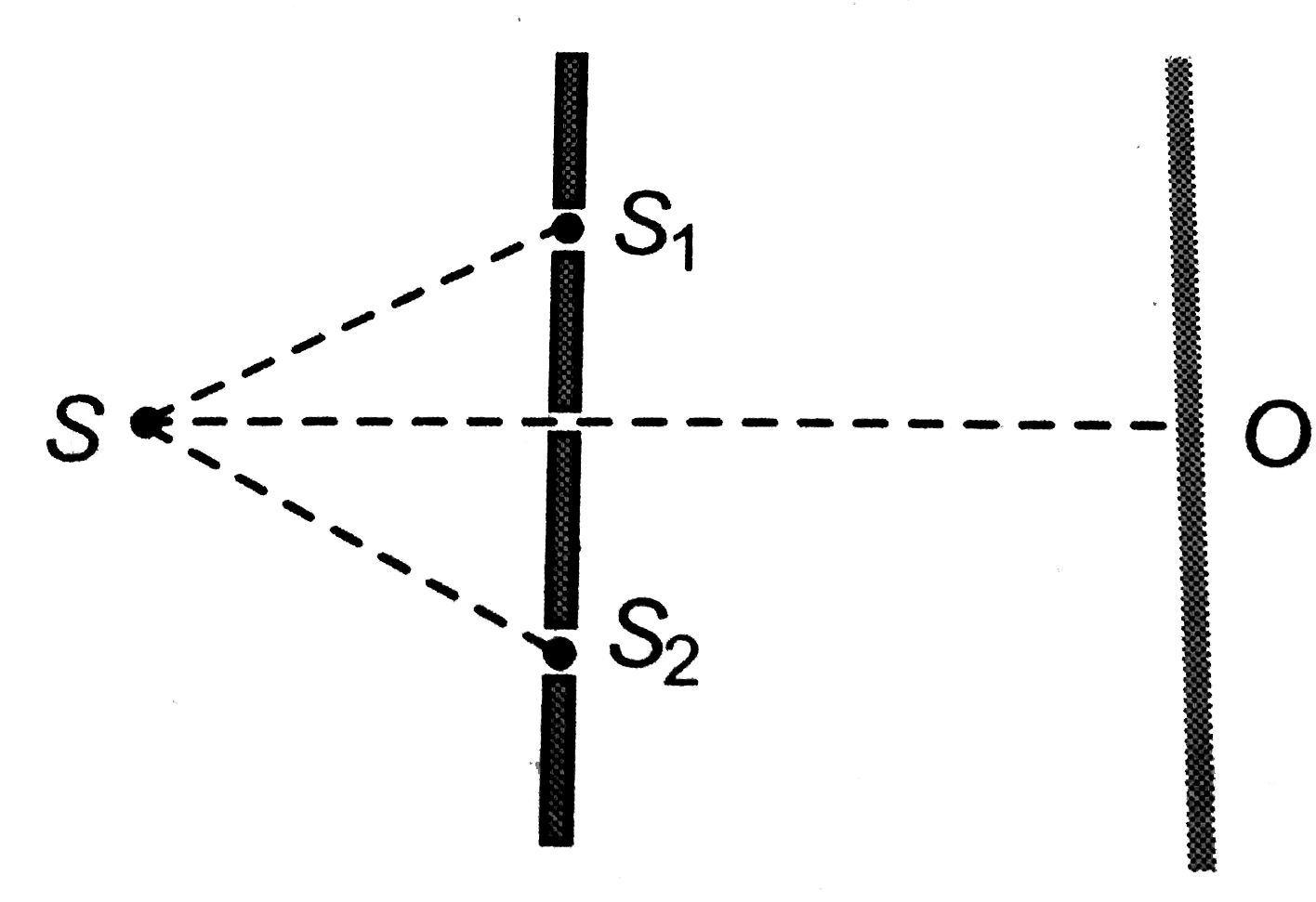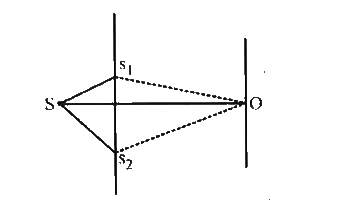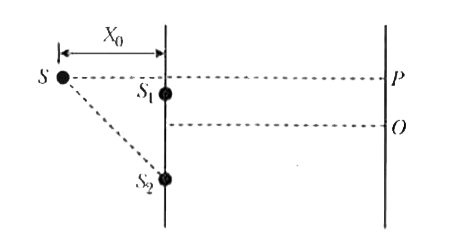Coherent light is incident on two fine parallel slits S1 and S2 as show in fig. If a dark fringe occurs at P, which of the following gives possible phase difference for the light waves arriving at P from S1 and S2 ?

mπ rad
(m+1/2)π rad
(2m−1)π rad
(2m+1/2)π rad
The correct Answer is:C
Step by step video, text & image solution for Coherent light is incident on two fine parallel slits S_(1) and S_(2) as show in fig. If a dark fringe occurs at P, which of the following gives possible phase difference for the light waves arriving at P from S_(1) and S_(2) ? by Physics experts to help you in doubts & scoring excellent marks in Class 12 exams.
Topper's Solved these Questions
- BOOK - RESNICK AND HALLIDAYCHAPTER - INTERFERENCE AND DIFFRACTION EXERCISE - PRACTICE QUESTIONS (More than One Correct Choice Type)23videos
INTERFERENCE AND DIFFRACTION
- BOOK - RESNICK AND HALLIDAYCHAPTER - INTERFERENCE AND DIFFRACTION EXERCISE - PRACTICE QUESTIONS (Linked Comprehension)21videos
INTERFERENCE AND DIFFRACTION
- BOOK - RESNICK AND HALLIDAYCHAPTER - INTERFERENCE AND DIFFRACTION EXERCISE - PROBLEMS61videos
INTERFERENCE AND DIFFRACTION
- BOOK - RESNICK AND HALLIDAYCHAPTER - HYDROGEN ATOMEXERCISE - PRACTICE QUESTIONS(Integer Type)6videos
HYDROGEN ATOM
- BOOK - RESNICK AND HALLIDAYCHAPTER - MAGNETIC FIELDS DUE TO CURRENTSEXERCISE - Practice Question (Integer Type)4videos
MAGNETIC FIELDS DUE TO CURRENTS
Similar Questions
Monochromatic light of wavelength λ passes through a very narrow slit S and then strikes a screen placed at a distance D = 1m in which there are two parallel slits S1 and S2 as shown. Slit S1 is directly in line with S while S2 is displaced a distance d to one side. The light is detected at point P on a second screen, equidistant from S1 and S2 When either slit S1 or S2 is open equal light intensities I are measured at point P. When both slits are open, the intensity is three times as large i.e. 3I. If the minimum possible wavelength is Nd2, then find the value of N(d<<D)
 View Solution
View SolutionThree coherent sourcesS1,S2 andS3 can throw light on a screen. With S1 switched on intensity at a point P on the screen was observed to be I. With onlyS2 on, intensity at P was 2I and when all three are switched on the intensity at P becomes zero. Intensity at P is I when S1 andS2 are kept on. Find the phase difference between the waves reaching at P from sources S1andS3.
View Solution
Knowledge Check
- Question 1 - Select One
A coherent light is incident on two paralle slits S1andS2. At a point P1 the frings will be dark if the phase difference between the rays coming from S1andS2 is
Anπ radiansB(n+0.5)π radiansC(2n+0.5)π radiansD(2n+1)π radians - Question 2 - Select One
In the set up shown in figure, the two slits S1 and S2 are not equidistant from the slit S. The central fringe at O is then
 A(a) Always brightB(b) Always darkC(c) Either dark or bright depending on the position of SD(d) Neither dark nor bright
A(a) Always brightB(b) Always darkC(c) Either dark or bright depending on the position of SD(d) Neither dark nor bright - Question 3 - Select One
Light is falling on the surfaces S1,S2andS3 as shown below.

The surfaces on which the angle of incidence is equal to the angle of reflection areAS1andS3BAll the three surfacesCS1andS2DS2andS3
In an interference experiment, the two slits S1andS2 are not equidistant from the source S. then the central fringe at 0 will be
 View Solution
View SolutionLight is falling on the surfaces S1,S2andS3 as shown below:

The surfaces on which the angle of incidence is equal to the angle of reflection areView SolutionColumn I shows four situations of standard Young’s double slit arrangement with the screen placed far away from the slits S1 and S2 . In each of these cases S1P0=S2P0,S1P1−S2P1=λ/4 and S1P2−S2P2=λ/3, where λ is the wavelength of the light used. In the cases B,C and D, a transparent sheet of refractive index μ and thickness t is pasted on slit S1 . The thicknesses of the sheets are different in different cases. The phase difference between the light waves reaching a point P on the screen from the two slits is denoted by δ(P) and the intensity by I(P). Match each situation given in Column I with the statement(s) in Column II valid for that situation.
View SolutionIn a modified Young's double-slit experiment, source S is kept in front of slit S1 as shown in the following figure. Find the phase difference at a point that is equidistant from slits S1 and S2 and point P that is in front of slit S1 in the following situations:

If a liquid is filled between the slit and the source S, what is the phase difference?View SolutionIn a modified Young's double-slit experiment, source S is kept in front of slit S1 as shown in the following figure. Find the phase difference at a point that is equidistant from slits S1 and S2 and point P that is in front of slit S1 in the following situations:

If a liquid of refractive index n is filled between the screen and slits, what is the phase difference?View Solution

